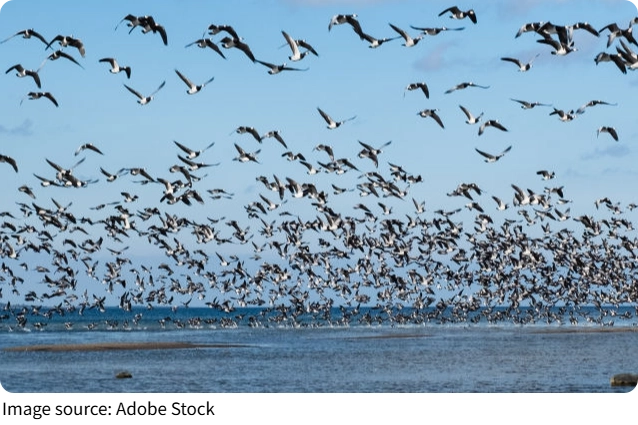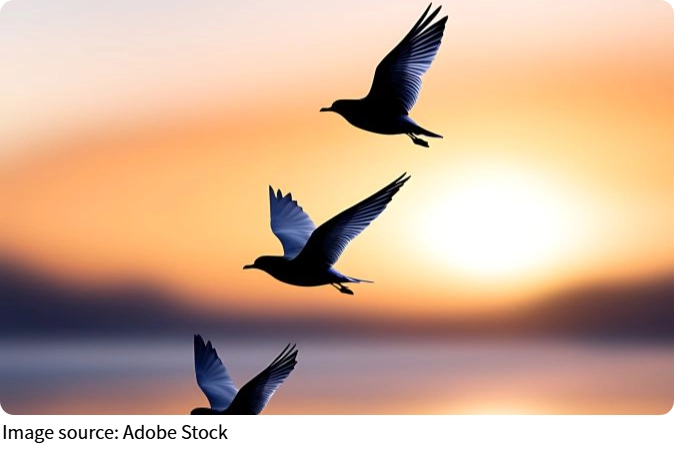Birds of Paradise

Imagine standing in the dense jungles of New Guinea, hearing only the rustling of leaves and the occasional chirp. Then, suddenly, an explosion of color and movement catches your eye.
What you've witnessed is no ordinary bird. It's the courtship dance of a male bird of paradise, a spectacle that rivals any human performance in both elegance and extravagance.
These birds are famous for their breathtaking and often bizarre mating rituals. The males, with their vibrant plumage and intricate dances, go to great lengths to impress potential mates. But why do these birds put on such a dramatic show? Is it merely about attracting a mate, or is there something deeper at play in the natural world? Let's explore the mesmerizing world of the birds of paradise.
The Art of Courtship: A Mating Ritual
Courtship among the birds of paradise is a true art form. It is not just about beauty; it's about precision, performance, and persuasion. The males of this species are the true stars of the show, using their elaborate feather displays, distinctive vocalizations, and complex dances to capture the attention of females.
1. The Plumage Show: The first thing that stands out about the male birds of paradise is their extraordinary feathers. Some species boast feathers that look like they belong in a fashion show—bright yellows, blues, and reds, often with an iridescent sheen.
Some males even have feathers shaped like fans, fringes, or wires, which they unfurl during their dance. These displays serve as visual cues, signaling to females that the male is healthy, strong, and capable of passing on good genes.
2. The Dance Performance: Once the feathers are in place, the real show begins. The male starts a series of movements, sometimes hopping, bowing, or spinning around a branch, all the while keeping his feathers in full display. The purpose of the dance is to demonstrate both agility and stamina. It's a way for the male to show off his physical prowess and appeal to the female's sense of aesthetics and strength.
3. Vocalization and Sound: As if the feathers and dance weren't enough, many species of birds of paradise accompany their movements with calls and songs. Some create sounds by snapping their bills, and others use their bodies to produce musical notes. The combination of visuals and sound creates a multisensory experience for the female, increasing the chances of attracting her attention.
Why Such Extreme Effort?
You might be wondering, why do male birds of paradise go to such lengths for a mate? The answer lies in evolutionary biology and the concept of reproductive selection. In the natural world, reproduction is everything. The goal of the male bird is simple: to prove his genetic fitness and ensure his offspring carry on his traits.
Females are the decision-makers in this scenario. They have the power to choose which male they find most attractive based on his physical appearance, dance ability, and performance. But this selection isn't arbitrary. Females are seeking the best possible mate, someone who demonstrates strength, vitality, and good genes. The extravagant dance and colorful feathers are a visual representation of all these qualities.
The more intricate and impressive the display, the more likely it is that the female will choose that male to mate with. This leads to the evolution of increasingly elaborate displays, with each generation pushing the boundaries of what's possible in terms of beauty and performance.
Species-Specific Courtship Displays
Not all birds of paradise perform the same dance. Each species has its unique way of wooing a mate. Some of the most famous species include:
1. The Wilson's Bird of Paradise: This species is known for its highly coordinated, acrobatic dance. The male will jump from one perch to another, all while showing off his bright blue, yellow, and red feathers, creating a hypnotic spectacle.
2. The Superb Bird of Paradise: Perhaps the most famous of them all, the male of this species has an extraordinary feather arrangement that forms a flat, circular disk. As he performs his dance, he opens this disk like a fan, surrounding himself in a halo of color that's irresistible to females.
3. The King Bird of Paradise: This bird's dance involves hopping around while simultaneously shaking its head and tail feathers. Its performance is less about intricate footwork and more about displaying the full range of its stunning plumage.
Each of these species has adapted its courtship ritual to suit its environment and to maximize its chances of attracting a mate. This diversity highlights the importance of creativity in the natural world, where evolution has shaped each display to be as unique and attractive as possible.
Impact of Habitat Loss on Courtship Rituals
Unfortunately, the magnificent courtship displays of the birds of paradise are under threat due to habitat loss. Deforestation, human encroachment, and climate change are all contributing factors to the loss of these birds' natural habitats. As the forests in which they thrive are destroyed, the birds are losing their stage—places where they perform their dances and attract mates.
Conservation efforts are crucial to maintaining these incredible species. Organizations are working to protect the rainforests and jungles of New Guinea, the primary home of most birds of paradise. These conservation efforts not only ensure the survival of these beautiful creatures but also preserve the rich biodiversity of these ecosystems.
The Final Act: A Legacy of Beauty
The courtship dance of the birds of paradise is more than just a mating ritual. It is a vibrant expression of life, survival, and the power of nature's creativity. These birds have evolved to create one of the most visually stunning performances in the animal kingdom, using their beauty, agility, and grace to woo a mate.

But like many wonders of the natural world, this display of beauty is fragile. Protecting their habitats and ensuring their survival is essential—not just for the birds, but for the entire ecosystem they help maintain. The birds of paradise remind us of the power of evolution, and the artistry that emerges when nature demands the very best from its creatures.

 · Animal Team
· Animal Team